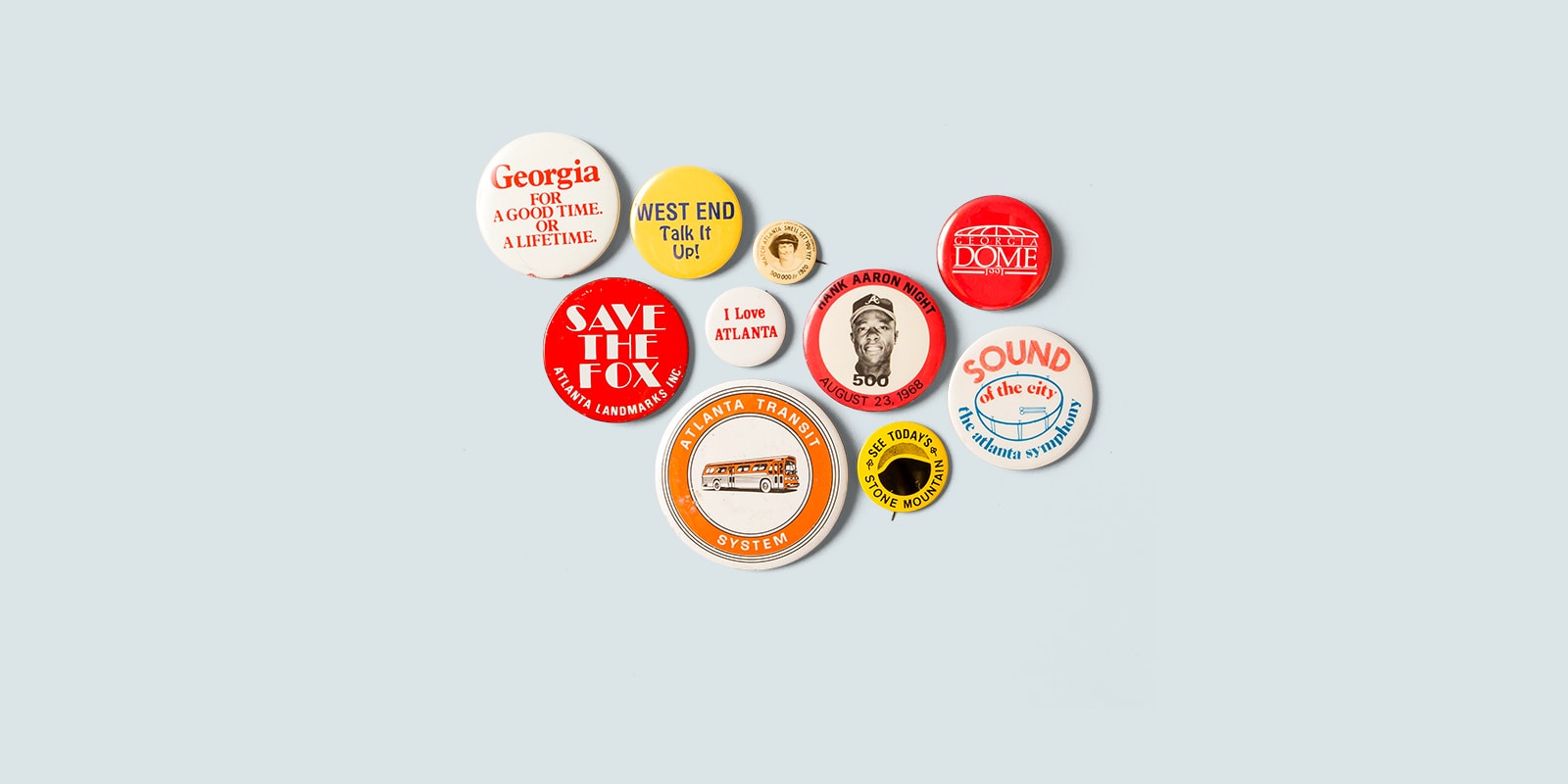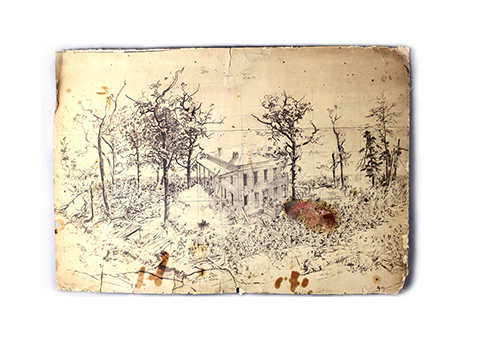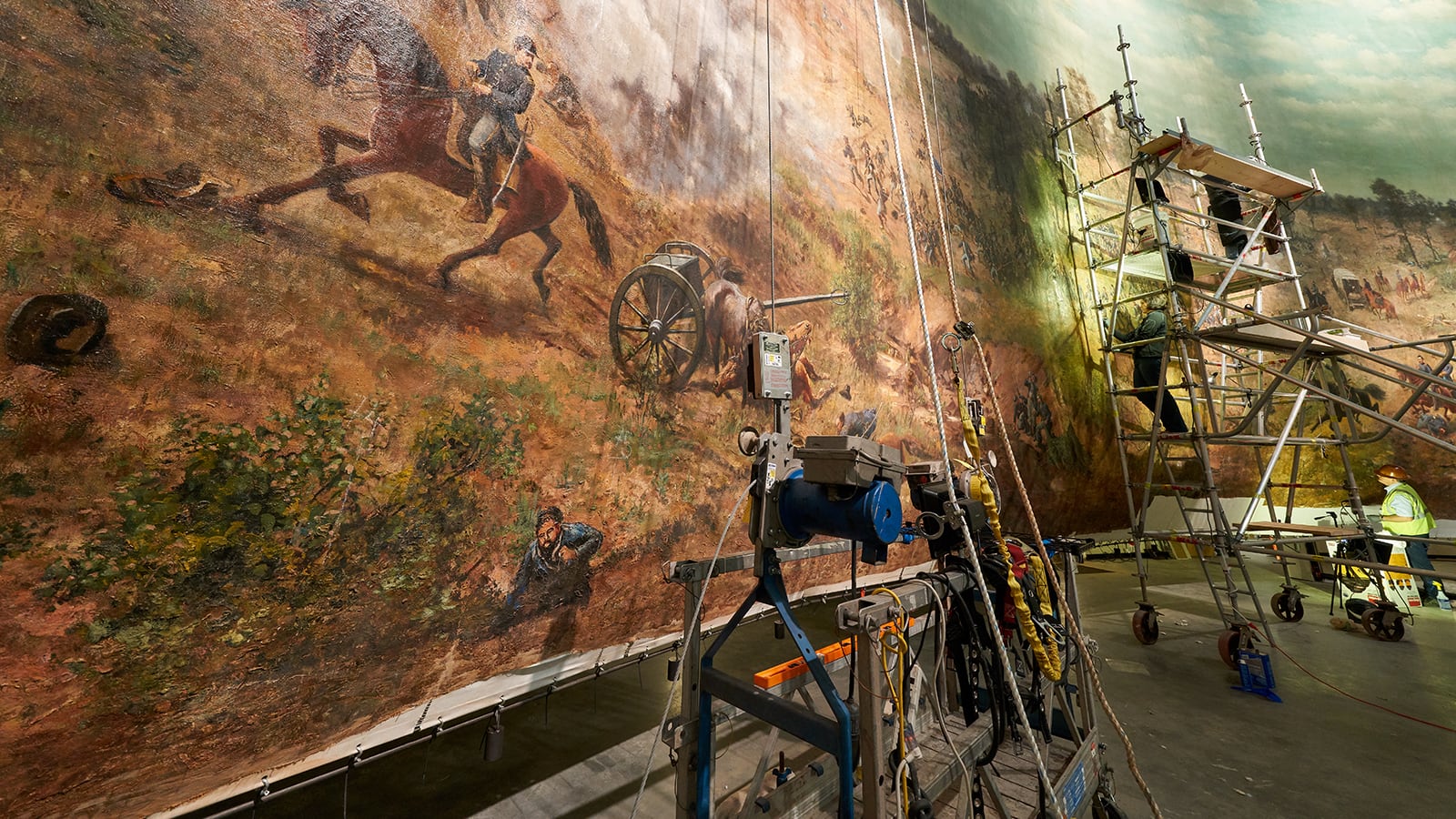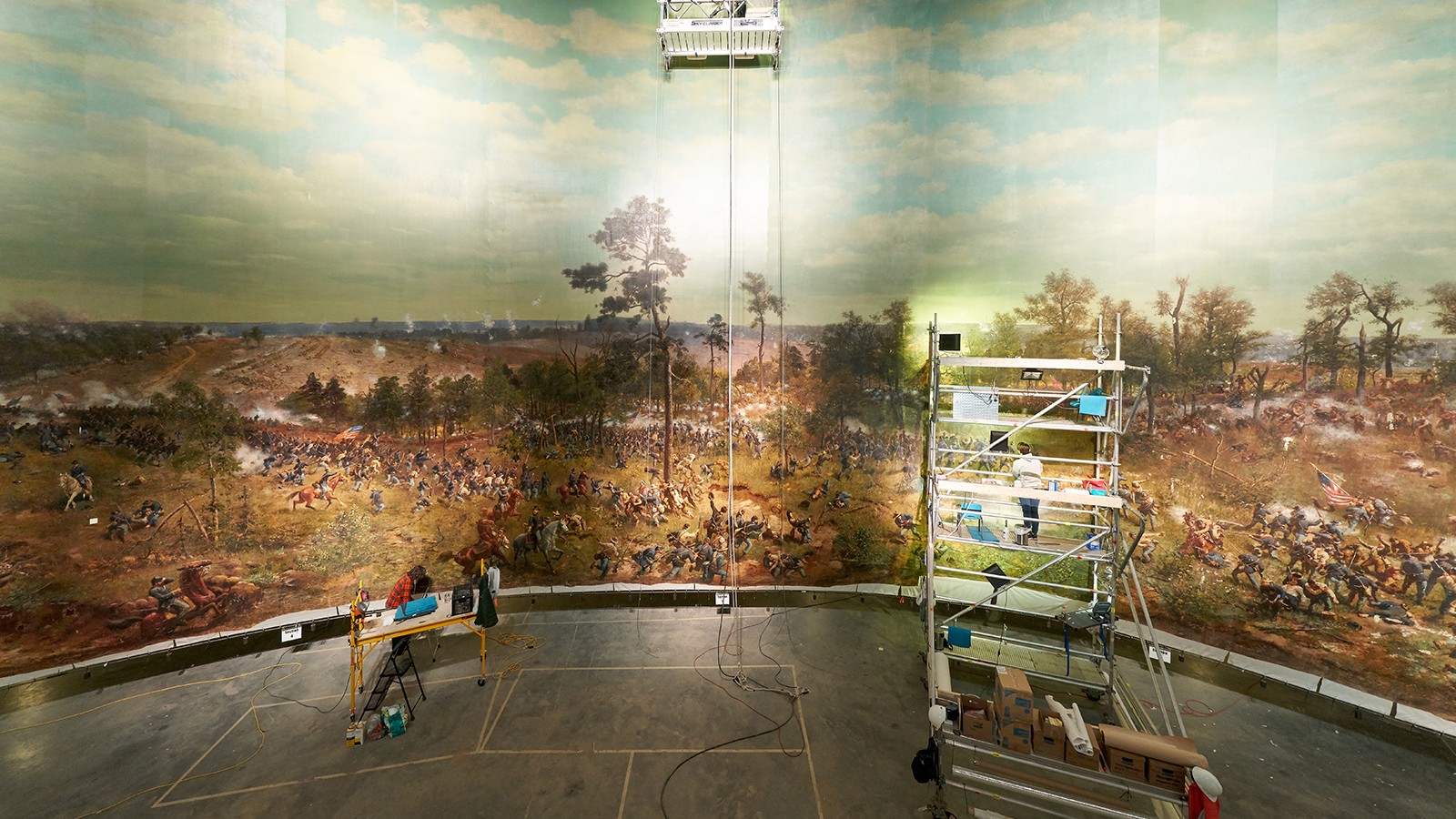Atlanta in 50 Objects
A pink pig and a renegade cow. A movie prop and a Coke bottle. A Pulitzer Prize–winning book and a Nobel Prize–winning icon.
How do you tell the story of Atlanta in 50 objects? We decided the best experts were Atlantans themselves—residents who cheer the Braves and rue I–285 rush-hour traffic, who understand how Civil War losses and Civil Rights victories together helped forge the city’s unique identity. Atlanta History Center asked the public to submit what objects they think best represent their town. The parameters were broad: an object could also be a person, a place, an institution, or an idea. After receiving hundreds of submissions, History Center staff assembled a collection of fifty pieces that represent the themes identified by the public. In addition to items from our own collections, we have partnered with many local institutions and individuals to gather artifacts from around the city to tell this community–driven story.


Cyclorama
In the summer of 1885, artists from the American Panorama Company in Milwaukee began developing sketches for The Battle of Atlanta painting.
German artists created a series of small scale drawings to represent the 360º depiction of the 1864 battle, including the one above, which still bears paint splotches from its illustrator. Grid squares allowed the artists to proportionately scale each sketch to the massive size of the painting. This scene depicted the intense fighting around the George Troup Hurt House, which was located on DeGress Avenue in present-day East Atlanta.
The enormous painting, 49 feet tall and 371 feet in circumference, debuted in Minneapolis in June 1886. It then travelled to, Indianapolis, Chattanooga, Nashville, and finally to Atlanta where it has been exhibited —with few interruptions— since 1892.
In 1934-1936, funded by the Works Progress Administration, artists Weis Snell, Joseph Llorens, and Wilbur Kurtz fashioned plaster figures for a diorama as foreground for the painting. Set on a flooring of red clay, the shrubbery, cannon, track, and 128 soldiers gave the painting more realism for visitors.
In July 2014, Mayor Kasim Reed announced the relocation and restoration of the Cyclorama to the Atlanta History Center. The History Center restored The Battle of Atlanta painting to its original hourglass shape, size, and overall height, to recreate the painting’s original visual perspective that has been lost for nearly one-hundred years.
The painting is now view in the 23,000-square-foot Lloyd and Mary Ann Whitaker Cyclorama Building at Atlanta History Center.

Conservators work to restore The Battle of Atlanta cyclorama painting at Atlanta History Center, 2018. Atlanta History Center, ©2017 Hales Photo.

Conservators work to restore The Battle of Atlanta cyclorama painting at Atlanta History Center, 2018. Atlanta History Center, ©2017 Hales Photo.